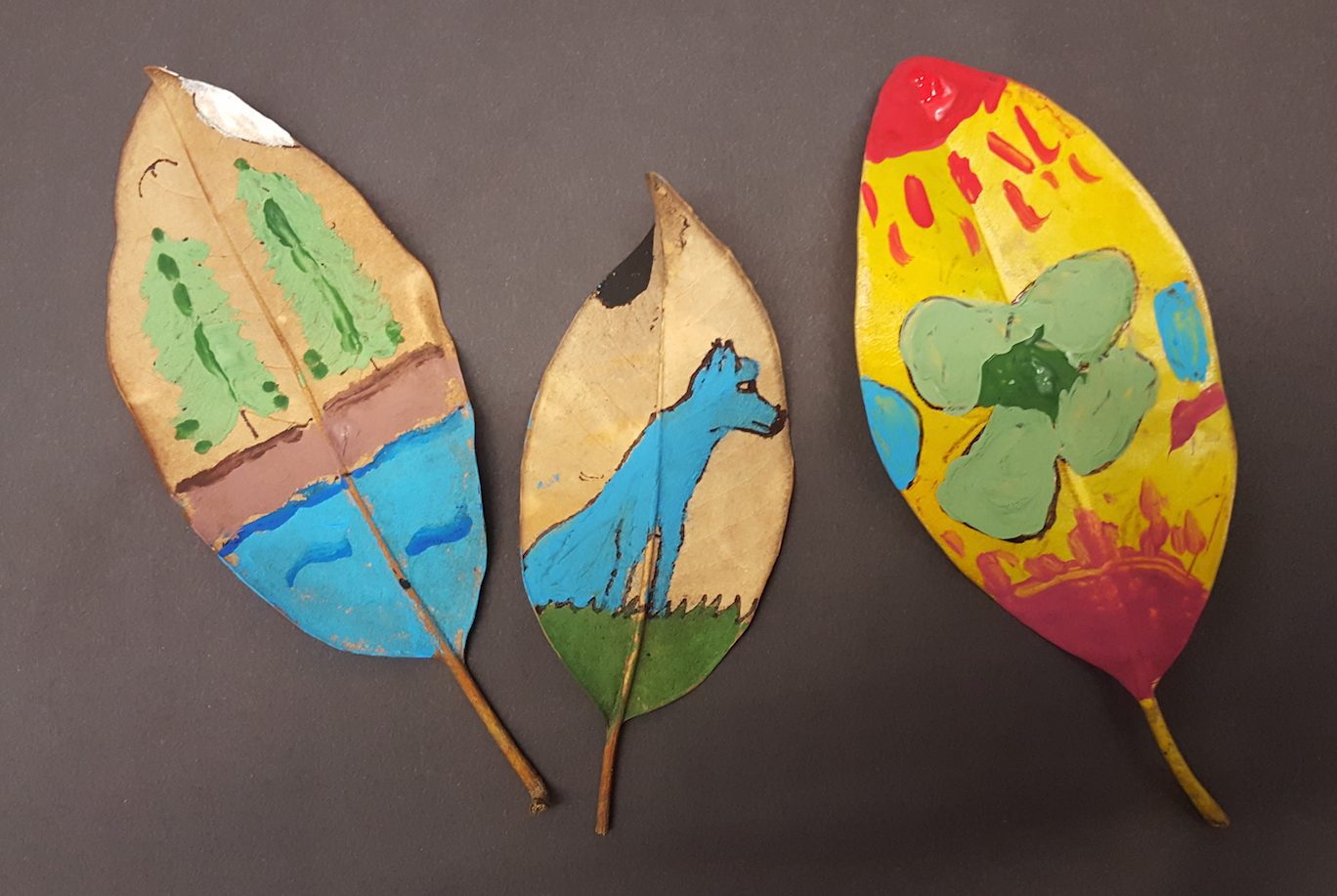This time of the year, it can sometimes be a challenge to keep students engaged. The energy of the season can translate into an over-energized (and not so focused) art room. The weather can add to the frustration. Being cooped up inside can make anyone a little antsy!
Here are four easy lesson ideas that bring in the outdoors.
I love using materials from nature in my classroom. Students love the different textures and colors of natural materials. The novelty of working with materials such as hay, leaves, dirt, or gravel can jump-start students’ imaginations. Best of all, most of these materials are free, and can be found right outside your classroom door!
1. Observational Drawing
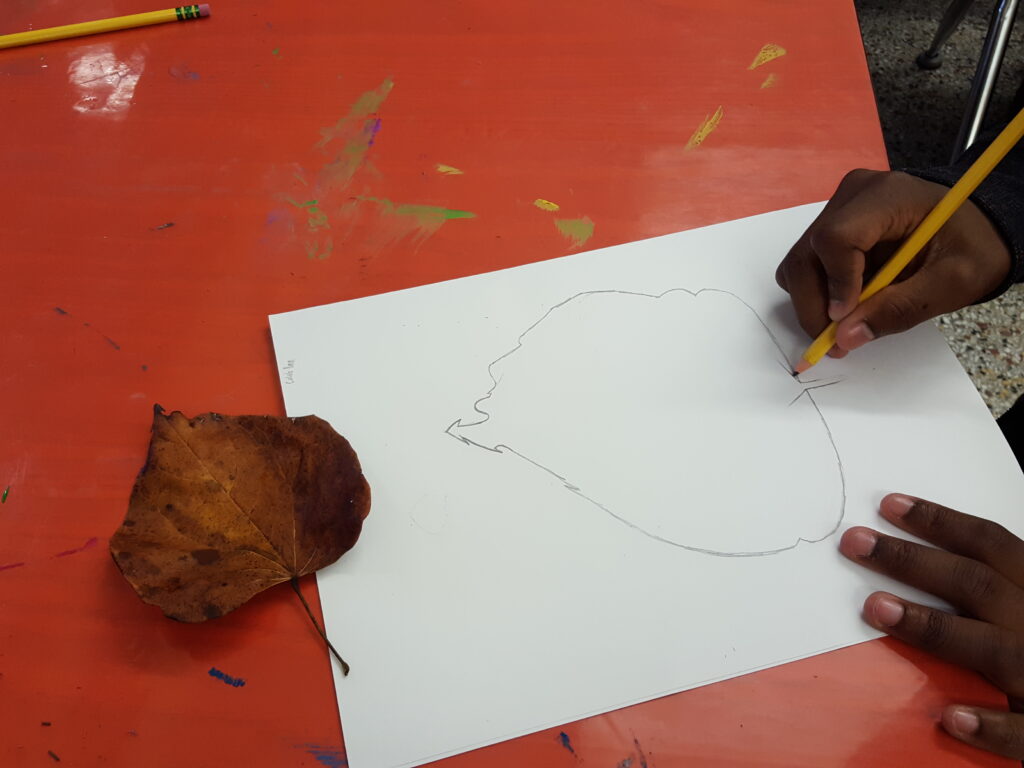
Students love drawing objects from nature. Shells, feathers, leaves, and flowers are ideal for observational drawing. This time of year, why not bring in some branches from your Christmas tree, or some leaves from your yard?
This activity is sure to engage all students. Every student can relate to nature. The unique qualities of each object provide enough challenge for even the most skilled drawer. I often use this as a warm-up activity for one of the following lessons, but it can be a wonderful lesson in its own right.
2. Painted Leaves
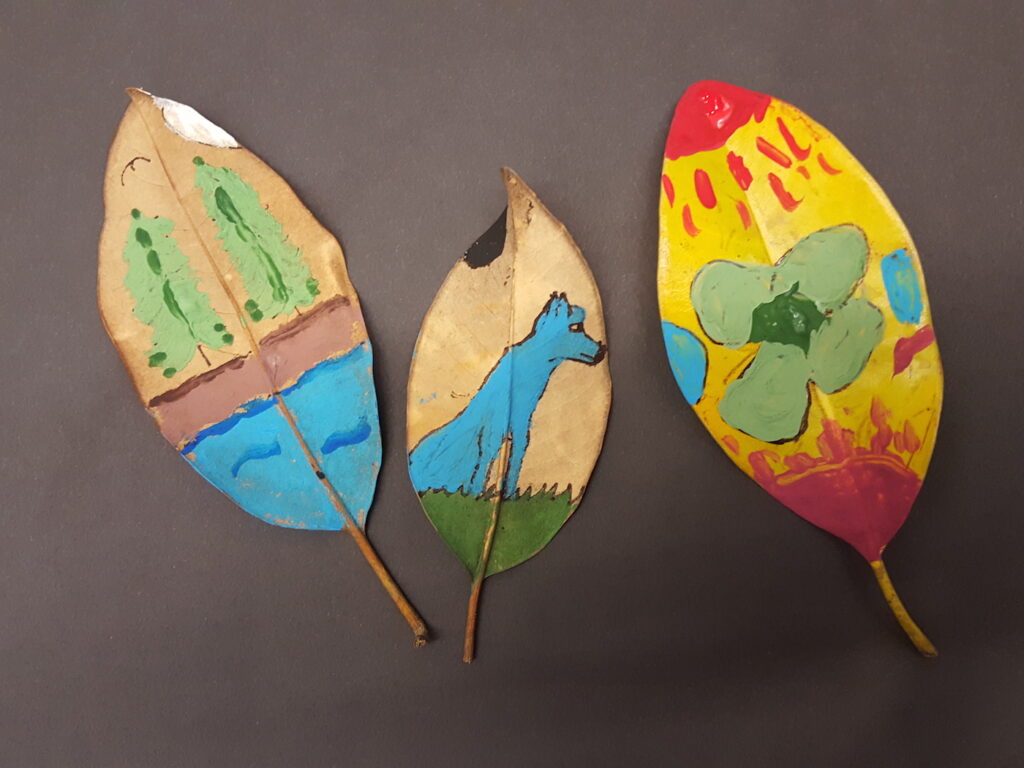
I have a lovely magnolia tree right outside my classroom. Its leaves are ideal for this project. They are thicker than other leaves and are a good size as well. If you cannot find magnolia leaves, any type of leaf will do.
After showing students a wide variety of examples, allow them to create their own painted leaf. I give little direction beyond this inspiration. Students are free to create any design they choose. Because students can become frustrated when leaves tear, I make sure to provide students with tips for painting on the delicate leaves.
Students use acrylic paint and thin brushes to paint their design after they draw it using a fine Sharpie marker. This always produces great results, and the students love it.
3. Nature Collage
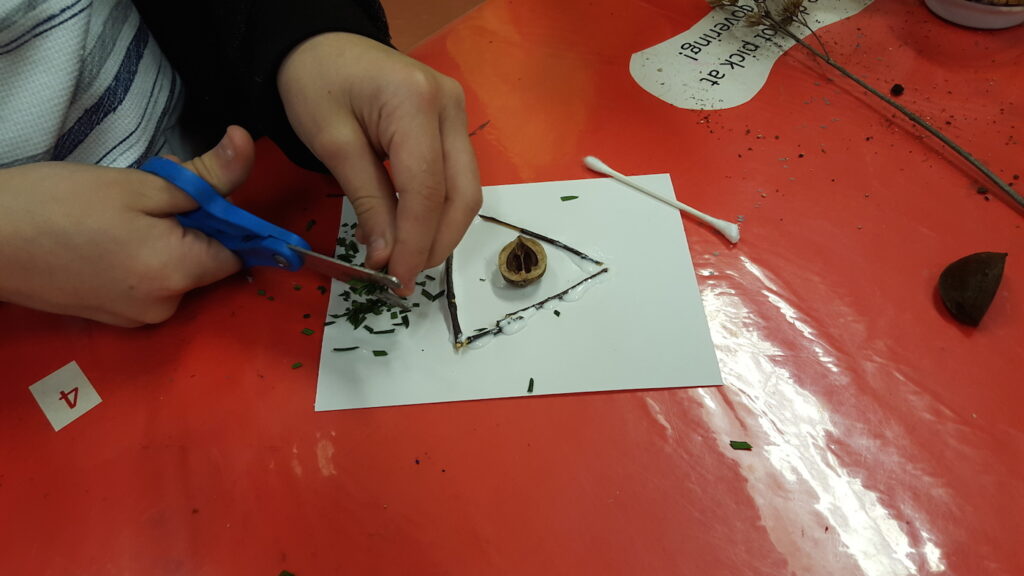
For this assignment, assemble a variety of different textural materials. Some examples include potting soil, fine gravel, crumbled leaves, cut grasses, nutshells, and small pieces of bark.
Students use a combination of these materials to make their own unique collage. I try to keep these pretty small. It’s important to provide students with a variety of different types of glue for this assignment, due to the varying nature of the materials. I always have a hot glue gun on hand as well to glue down large, heavy objects such as shells and bark.
These always come out beautiful. This is one of my favorite lessons for keeping students engaged right before winter break.
4. Collaborative Nature Sculpture
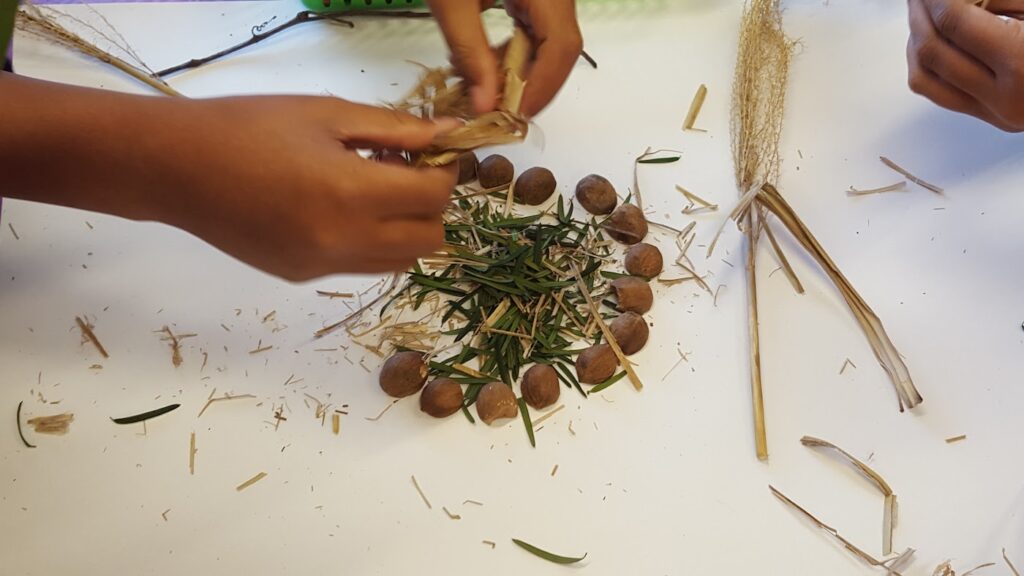
My students love group projects. I also believe that working together as a group to create an artwork builds valuable skills that transfer far beyond my classroom.
For this project, assemble a variety of materials such as tree branches, dirt, and stones. If you have a Christmas tree you plan to leave by the curb after the holidays, this can be a great way to reuse it!
I connect this activity to the work of artist Andy Goldsworthy. Students love to see how he uses materials in their natural environments to create beautiful sculptures.
Because it is winter time, we bring nature indoors for this activity. Students work as a group to plan and assemble their sculpture, using as many different materials as possible.
This can be done on any scale that works with your space. In the past, I have had my students work on a large piece of paper to define the area of the sculpture. I break my students into groups of 3 or 4, but this could be amazing as a whole-class collaborative artwork as well!
So there you have it–four different art project ideas that help reconnect with nature during the darkest, coldest part of the year. Even though it might be snowing outside, you can still bring the outdoors in!
Do you use natural materials with your students?
How do you bring the outdoors into your classroom?
Magazine articles and podcasts are opinions of professional education contributors and do not necessarily represent the position of the Art of Education University (AOEU) or its academic offerings. Contributors use terms in the way they are most often talked about in the scope of their educational experiences.
